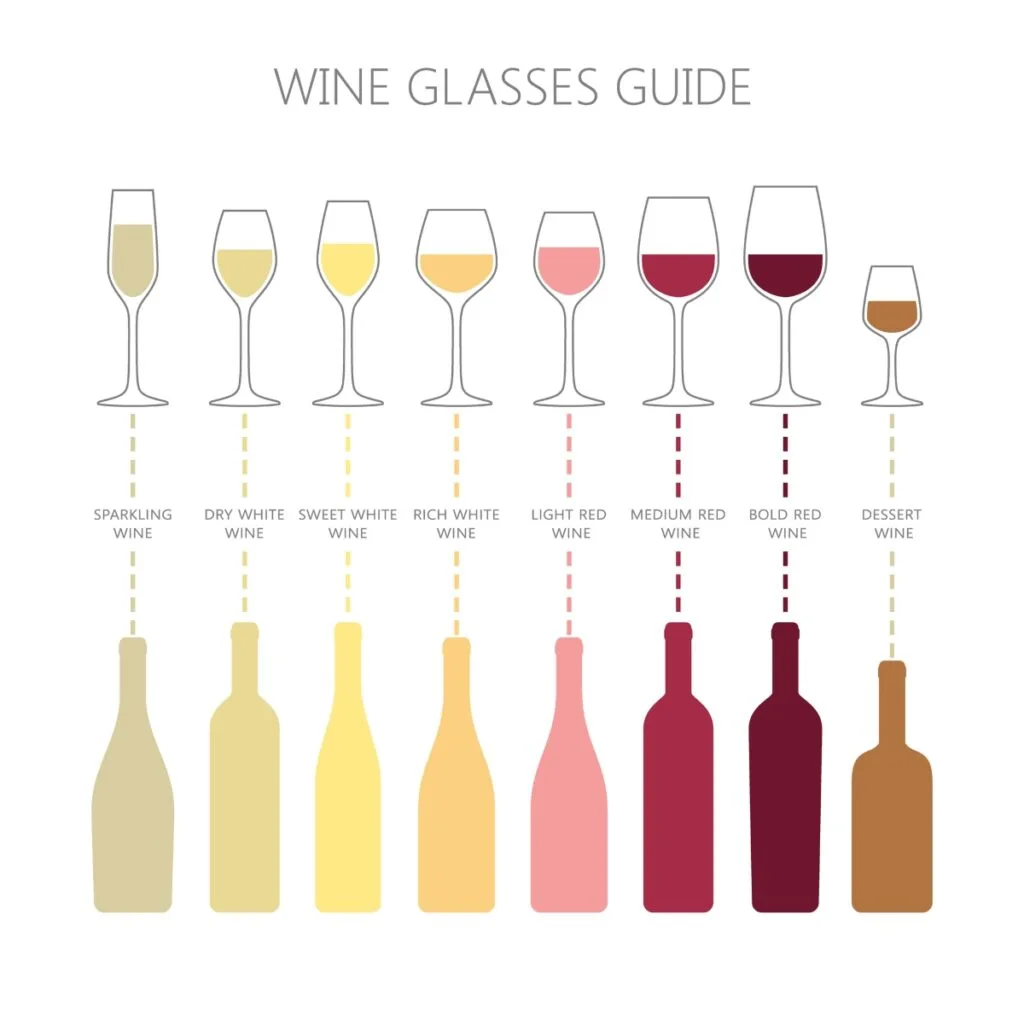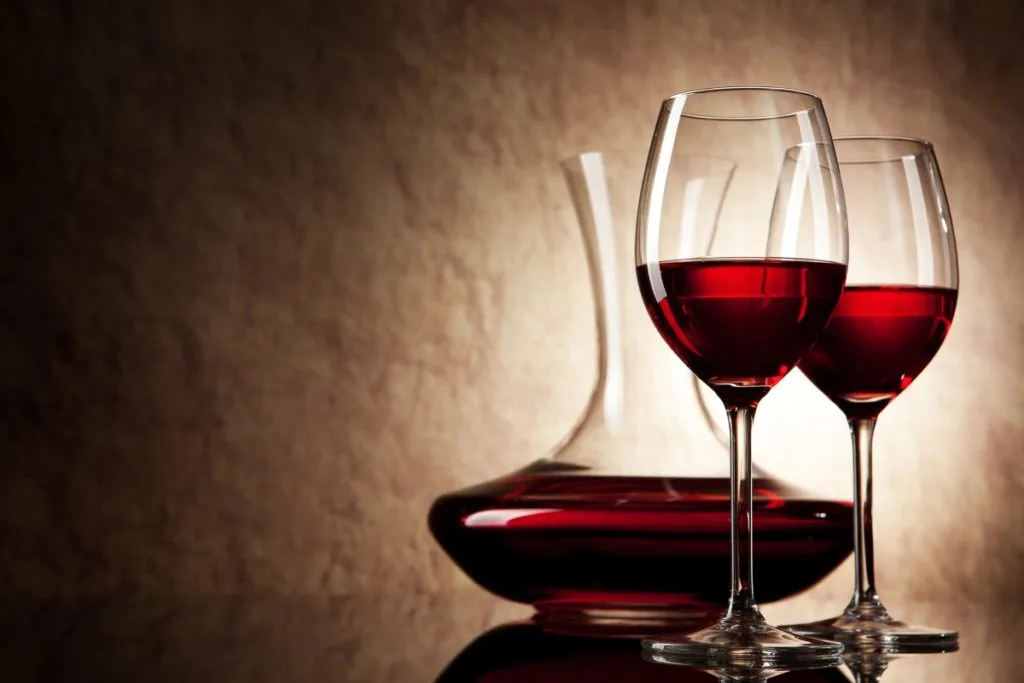As an Amazon Associate, I earn from qualifying purchases with no additional costs for you.
The stem of a wine glass isn’t simply there to make a glass easy to break or to make it look more beautiful. The stem is actually what you are supposed to be holding when you drink wine! In this article, we look at some specific reasons why wine glasses have stems.
Wine glasses have stems so that our hand will not warm the wine in the glass and so that you’re able to swirl the wine (allowing for air to get to it). Temperature is very important to wine, and since it’s essential that wine be served (and consumed) at the correct temperature, a stem is needed.
There’s more! The stem on a wine glass allows the wine to be swirled, therefore, aerating the wine. Read below for more details and even some tips on how to swirl wine like a professional! We will also cover the psychology of the enjoyment factor behind drinking wine out of a glass with a stem versus a stemless glass.

TIP: If you want to check out the best refrigerator for wine storage, I recommend trying out the Avation (18 bottles) compressor refrigerator with Wi-fi smart app control cooling system. You can find this refrigerator by clicking here (Amazon link).
Do wine glasses need stems?
Wine glasses do indeed need stems! Wine glasses need stems because a stem will enhance the joy of wine drinking and enhance the flavor and aroma of the wine. This is because a well-designed glass allows the aromas and flavors to open up. Also, it gives you something to hold onto other than the bowl.
According to sommeliers (wine experts), serving temperature for a wine is key. Pouring wine at the correct temperature lets all the wine’s nuances shine through. Having your hand directly on the bowl – the only option with a stemless glass – will increase the temperature of the wine and interfere with its flavor.
TIP: Should you tip your Sommelier at a wine-tasting event? Find out what the etiquette is in this article. What if you don’t like the wine that you ordered? Can you simply send it back? This article explains the rules and etiquette.
Temperature is one of the two most important aspects of wine (the other is storage). Keeping your wine at the correct temperature is critical and crucial to attaining the full flavors and aromas of your wine (white or red).
Even though there are specific guidelines for serving temperatures for wine, it sometimes comes down to a personal preference. So if you want your red wine slightly chilled and your white wine served slightly warm, the desired result cannot be attained with a stemless glass.
If ever in doubt, serve wine a few degrees cooler than room temperature. No wine should ever get to over 68 degrees F, which could easily happen if holding a stemless wine glass at a party or event.
Recommendation box: Everything you need to enjoy your wine as much as possible. All recommended products are personally tested and regularly used by experts from this website (Amazon links):
> Ivation Wine Cooler – Energy-efficient wine cooler for 18 bottles with Wi-fi smart app control cooling system.
> Wine Rack – Beautiful, elegant wood rack for up to 7 bottles and the choice of vertical or horizontal storage.
> Durand Wine Opener – Classic vintage wine opener (we like all these classic staff).
> YouYah Iceberg Wine Decanter – The most beautiful and handy wine decanter we personally use.
> Bormioli Rocco Wine Glasses – A set of eight elegant and traditional wine glasses made in Italy.
> Vintorio Wine Aerator – Simple but really useful wine aerator for a reasonable price.
> The Original Vacu Vin Wine Saver – The best wine saver on the market in a package with two vacuum stoppers and two wine servers.
And if you want to become a true connoisseur of wine, we recommend reading the book Wine Folly: The Essential Guide to Wine (Amazon link), where you will find all the information you need about winemaking, wine varieties, flavors, and much more.
Why do wine glasses have stems?
Wine glasses have stems because they are viewed as a tool for having a better quality wine experience. The wine glass is more elegant with a stem, and psychology tells us that when wine drinkers are handed a glass with a stem, it makes a difference in the way they view the wine.
Festivity, formality, and just an overall “fancy” feeling can be invoked from a glass with a stem. If you’re spending over $30 for a bottle of wine, it really needs to go in a nice glass. Conversely, if you spend $10 on a bottle of wine, a nice glass with a stem can still elevate your drinking experience.

In a restaurant setting, there’s an understanding that the glassware will fit the space and price point. In other words, if you’re drinking a $200 bottle of wine, you should expect formal service and a nice glass. If you are in a super casual bar setting, stemless glassware may be what is offered.
Why do wine glasses have long stems?
Wine glasses have tall and slender stems because it helps wine to stay cold. Wine glasses have long stems to allow for your fingers to hold the glass without warming the wine with your hand. As mentioned above, holding a glass by its bowl increases the temperature of the wine.
A long stem also means that the appearance of the wine will not be ruined by fingerprints, also known as smudging the glass.
A long stem is desirable for Champagne because it prevents heat from interfering with the bubbles. The delicious fizz in sparkling wine can immediately turn flat in connection with warmth/heat.
TIP: Is there a difference between sparkling wine and Champagne? To find out all you need to know, read this helpful article. Does Champagne go off in the heat? This guide explains.
Uncorking the bottle and pouring sparkling wine/Champagne upsets the delicate balance of the wine anyway, so making sure you minimize this by serving it in a glass with a long stem is important.
On another interesting note, experts suggest that you don’t put your glasses in the dishwasher for optimal bubbles and be sure and wipe the glass out with a dry rag before pouring the bubbly. It’s also a good idea to pour your sparkling wine against the side of the glass to preserve the bubbles.
TIP: Most wines go bad once you pop the cork within a day or so. But a Coravin Wine Preservation system (available for a great price on Amazon) can extend the life of your opened wine for weeks or even months. It is awesome. You should check it out to see if it fits your lifestyle.
Why do red wine glasses have stems?

Red wine glasses have stems because red wine needs aeration (getting air to get to the wine).The best way to do this is to make sure your red wine is served in a glass with a stem so that you can swirl the wine. Swirling releases the hundreds of different aroma compounds found in red wine.
The best way to swirl your wine is to place your thumb and forefinger at the base of your stemmed glass while it is sitting on a table. Next, draw little circles on the table while gripping the base of the glass. It’s been proven that most of the enjoyment of wine comes mostly from aromas (the nose’s ability to smell).
The swirl causes alcohol to evaporate which brings the pleasing aroma compounds in the wine to your nose (example, blackberry, vanilla and oak). The compounds are so small that they are able to float on the evaporating alcohol into our nose. Without a stem, correct swirling is not possible.
TIP: Why are different wine glasses used for red and white wine? Find out the real answer here! Should wine glasses be chilled or not? Find out all the facts in this article.
Red wines tend to have a lot of acidity. This means they need to breathe. Just as swirling a red wine with a glass (containing a stem) is important, on a side note – the red wine glass also needs a larger bowl.
Red wine that sits in a big bowled glass with a stem is ready to be swirled (aerated) after ideally sitting for about ten minutes. At this time, you will taste a smoother, silkier feel on the back of your palate when drinking it.
TIP: If you are interested in buying a wine decanter, I recommend purchasing these two top-quality decanters:
- USBOQO Wine Decanter (check it out on Amazon & read customer reviews)
- Iceberg Wine Decanter (check it out on Amazon & read customer reviews)
Conclusion
It is interesting to note that the history of wine glasses is a rich one. Starting out with wine being drunk from animal horns to the plastic stemless tumblers of today, the vessels in which to drink wine are endless.
The substance that is most meant to carry wine, however, is glass – with a stem. Glassmaking began centuries ago, and glasses were once status symbols. There were glasses for Champagne, white wine, red wine, sherry, etc. Although their shapes were very different, they all had one thing in common – they had a stem.
Now you definitely see stemless glassware everywhere. Some restaurants use them as water glasses as well as wine glasses. They are also for sale in specialty shops with clever sayings etched on them.
There seems to be a modern affinity for stemless glassware partly because of the ease of its use. In other words, the stemless glass can provide a bit of ease because of its casual nature. You can drink your wine without the fear of breaking a delicate, stemmed glass.
TIP: A suitable wine glass is the basis for enjoying well-being while drinking your favorite wine variety. Here are our favorite ones (Amazon link):
- Bormioli Rocco Crystal Wine Glasses: A set of eight elegant and traditional wine glasses made in Italy for a reasonable price.
- Riedel VINUM Wine Glasses: Luxury set of two wine glasses suitable for any occasion. We just love them!
- Schott Zwiesel Tritan Crystal Glasses: If you like unusual alternatives, a set of six stemless glasses made of crystal glass.
That’s one school of thought. Another one is that the stemless glass represents a kind of inclusion for the new wine drinker. Because it is a more casual experience and there is basically only one shape, some argue it is more approachable for beginners to drink from a stemless glass.
According to one wine scholar and teacher, “Anybody should be able to drink good wine in any kind of setting.” So, it takes away some of the inevitable “snobbiness” associated with wine. In conclusion, I will say that if you have stemless wine glasses, why not use them for something other than wine?
Putting wine in these glasses can be compared to leaving your glass on a warm stove. Also, when you hold a stemless glass at a party, it just continues to get warmer until it tastes unpleasant. Any wine, white, red, or sparkling, needs a little love.
TIP: Check out this page for a complete list of wine products and accessories I love. You’ll find my recommendations for wine refrigerators, decanters, and aerators and the best place to buy wine online. Click here to see the complete listing.
Sources:
1.) The Wine Bible (second edition) by Karen MacNeil
2.) Wine Folly The Essential Guide to Wine by Madeline Puckett and Justin Hammack
BTW: You can buy these two amazing and useful books here and here (Amazon links).
